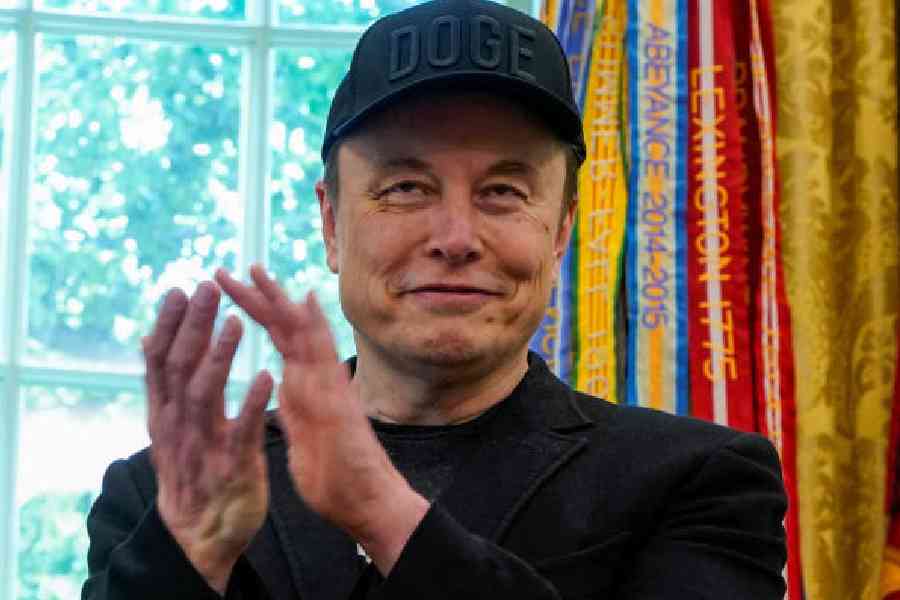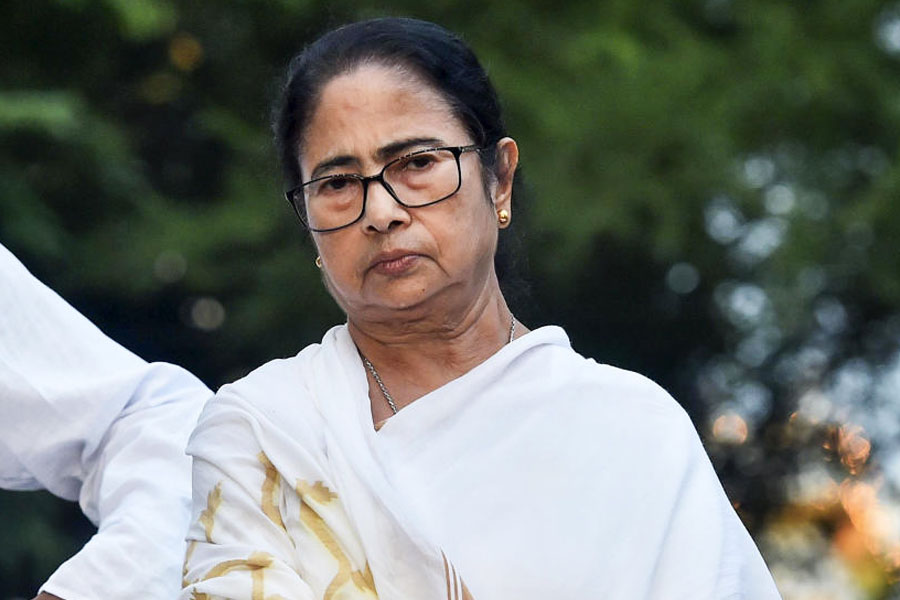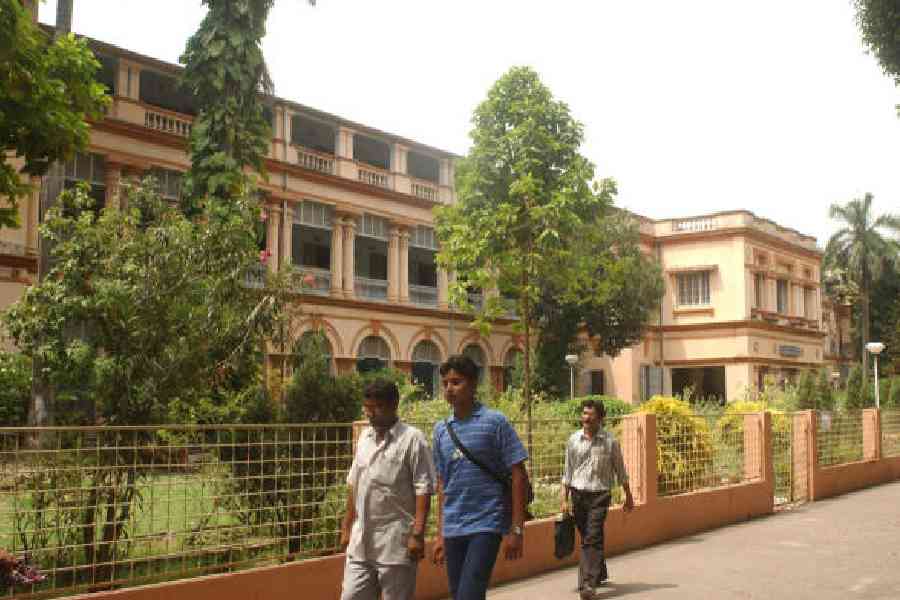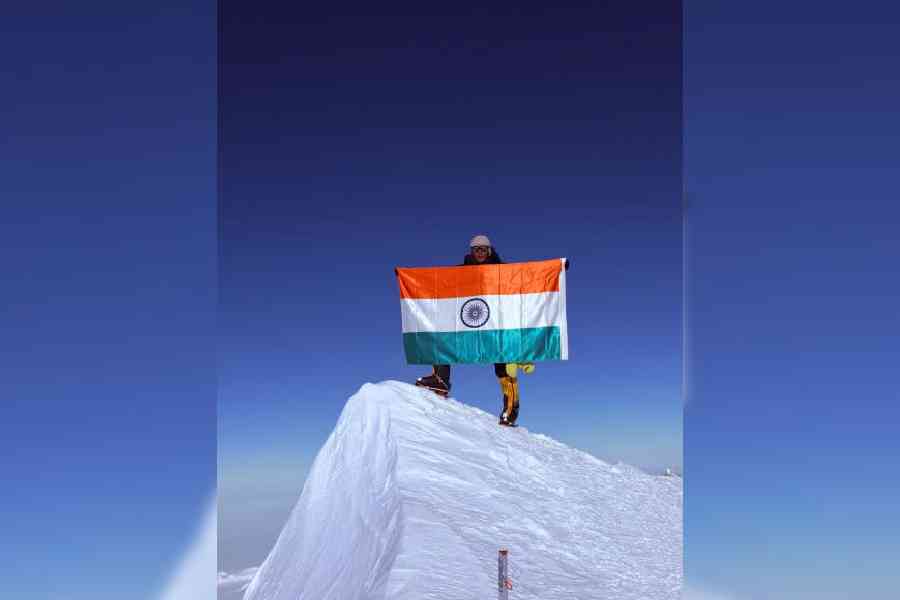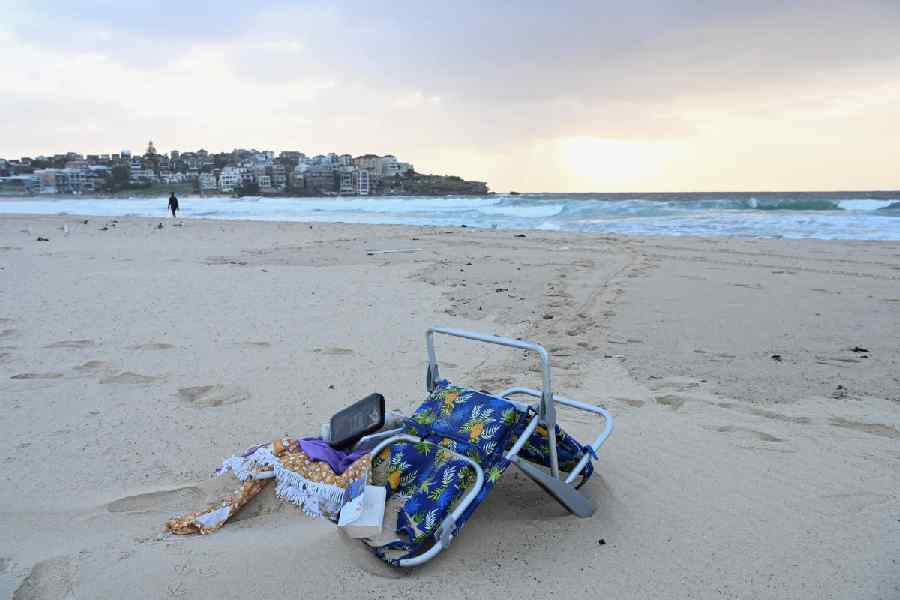 |
 |
 |
| IDENTITY CRISIS: (From top) Mansab Sheoraguri, an Indian enclave within a Bangladeshi one; Md Asgar Ali, the oldest resident of Mashaldanga; Bharat Bangladesh Enclave Exchange Co-ordination Committee leader Diptiman Sengupta addresses a demonstration in Cooch Beha. Pictures: Debaashish Bhattacharya |
I t could well have been Akbar Ali’s moment of triumph. After all, he had waited for this day for nearly four decades. But when India and Bangladesh signed an agreement in Dhaka on September 6 to resolve long-simmering border disputes, Ali, who describes his home as “a tiny island of Bangladesh, ringed by a vast sea of India” — felt a wave of despair wash over him.
The agreement, signed in the presence of the two neighbouring Prime Ministers, promises, among other things, to delineate the “undemarcated” stretches of the 4,100km-long border the two countries share, paving the way for an exchange of 111 Indian enclaves inside Bangladesh and 51 Bangladesh enclaves inside India.
But Ali, a resident of Bangladeshi enclave Mashaldanga in Cooch Behar in West Bengal, where all 51 Bangladeshi enclaves are located, believes not much will come of the agreement. For one thing, he says, the Prime Ministers made no mention of the exchange of enclaves when the accord was signed.
For another, the land pact is in line with the Indira Gandhi-Mujibur Rahman land boundary agreement signed in 1974 by the then Prime Ministers of India and Bangladesh, which was never implemented.
“They are almost the same. How do we know the two countries will implement this agreement when they did not do so earlier,” the 55-year-old farmer asks, voicing the apprehension of many residents of Mashaldanga, where some 3,800 people live with no aid from either country.
Centenarian Mohammad Asgar Ali, Mashaldanga’s oldest resident, shakes his head in disgust. “Never did the leaders of India and Bangladesh say that this agreement would end our sufferings.”
In the run-up to the accord, hopes for an imminent exchange had surged among the enclave residents — nowhere people who are citizens of neither country and have no birthrights — when Union home minister P. Chidambaram announced the modalities of the exchange in Parliament.
The two countries also carried out a joint survey along the border and conducted a head count in July, determining that 51,000 people lived in the 162 enclaves that would change hands once the border pact took effect.
On Tuesday, Akbar Ali’s eyes were glued to a battered television set that runs on a battery in his tin-roofed hut. There is no electricity in the enclave, even though electric lines run overhead, lighting up the Indian villages of Nazerhut and Shalmara perched on either side of the Bangladesh enclave.
 |
| Mashaldanga residents protest the use of their road by the Indian election commission while denying them voting rights. Picture: Main Uddin Chisti |
“I have waited in vain for 40 years for this day,” Ali says, referring to the birth of Bangladesh in 1971, when residents of Bangladesh enclaves say they thought they would be “liberated” too.
Ali could be wrong, but what galls the enclave residents most is that no time limit has been set to implement the treaty. “This so-called agreement is an eyewash. It will go the same way as the 1974 pact and the 1992 agreement between the then Premiers P.V. Narasimha Rao of India and Begum Khaleda Zia of Bangladesh to settle the enclave issue,” says Diptiman Sengupta of the Bharat-Bangladesh Enclave Exchange Co-ordination Committee, spearheading a movement in Cooch Behar.
Needless to say, exchanging enclaves is a tricky affair. The agreement needs to be ratified by the two Parliaments before it is implemented. India also needs to amend its Constitution since the exchange means it has to give away some 10,000 acres of land to Bangladesh. A senior leader of the Opposition Bharatiya Janata Party cautions against “a loss of our mainland to Bangladesh in whatever deal we may strike with them”.
If the Manmohan Singh-Sheikh Hasina agreement takes effect, Bangladesh will own the 111 Indian enclaves that lie in its territory with an area of 17,160 acres, while 51 Bangladeshi enclaves stretching across 7,110 acres will merge with India.
Bangladesh officials say the 1974 land agreement could not be implemented as the treaty was not ratified by the Indian Parliament. “We amended our Constitution following the agreement but we never got the ratification letter from India,” a Bangladesh source says. An external affairs ministry official in Delhi, when contacted, refused to comment on the 1974 agreement.
Under the 2011 agreement, families living in the 162 enclaves — locally known as chhit or chhitmahal — will be asked to choose their nationalities. For instance, a man living in an Indian enclave in Bangladesh could opt for Bangladesh citizenship and stay on in that enclave once it is handed over to Bangladesh. Or he can leave the enclave and come to India and become an Indian citizen. In that case, he will be allotted a plot to stay in India.
But for the 17,000-odd people living in the Bangladesh enclaves, going to Bangladesh is not an option. Having lived within India for years, they say they have become Indians “at heart”.
“We may have lived in Bangladesh enclaves for generations but India is our country. This is where we grew up and this is where we earn our livelihood, selling paddy and vegetables in the Indian markets next door,” says 40-year-old Bellal Hussain of Madhya Mashaldanga, a neighbourhood of the Bangladesh enclave.
Ibrahim Sheikh, a 28-year-old wage earner, agrees. He has never been to Bangladesh, and married a girl from a neighbouring Indian village like several others from the Bangladesh enclaves. “India is my home,” he says. “I am proud to be an Indian by marriage.”
Life, however, is not easy for the stateless people. They don’t have a single piece of paper — except for land deeds — that identify them as residents of the enclaves. “Each time we step out of our enclaves, we worry about being arrested by the Indian police who accuse us of being Bangladeshis even though Bangladesh does not recognise us as its citizens,” says Sheikh, who was arrested some years ago when he tried to board a train from Cooch Behar to go to Delhi.
“I was pushed back into Bangladesh by the Border Security Force but Bangladesh officials refused to accept me and I was finally sent back to my enclave,” he says.
That’s not all. The enclaves, apart from having no electricity, don’t have schools or hospitals. Parents send their children to schools in neighbouring Indian villages. But for an enclave child, to get into an Indian school means abandoning his parents, at least officially.
“My father got an Indian villager to certify that I was his child after paying him some money before I was allowed to take admission to an Indian school,” says 18-year-old Saddam Hussain, a BA first year student at a Cooch Behar college.
It’s also not easy for a woman from a Bangladesh enclave to give birth to a child in a Cooch Behar hospital — unless her husband persuades an Indian man to pose as his wife’s “official” husband, says Alauddin Mian of Kismat Batrigachh, a Bangladeshi enclave near the Cooch Behar sub-divisional town of Dinhata.
A haphazard map, drawn at the Partition of India in 1947, has also given birth to “counter-enclaves” in India and Bangladesh — enclave of a country within the enclave of the other.
For instance, the Indian enclave Mansab Sheoraguri lies deep inside the Bangladesh enclave of Mashaldanga. Chittamohan Das lives here with his family on a 2.5 acre plot that makes up the enclave.
For the Das family, the only way to get to the Indian mainland is through the Bangladesh enclave. But unlike residents of Mashaldanga, the lone Mansab Sheoraguri family has ration cards and voters’ identification cards, provided by Indian authorities.
Curiously, some of the Indian counter-enclaves are now peopled by former residents of Bangladesh enclaves. Take Madan Kura. This Indian enclave, with an area of 40 acres or so, lies within the Bangladeshi enclave of Batrigachh.
All but one of the 150 families that now live in this village came from adjoining Batrigachh when the Singmari river swallowed part of the Bangladeshi enclave, gobbling up even the village’s main concrete mosque, in one of the worst river erosions witnessed in Cooch Behar in the last 15 years.
Today, most of these families have ration and voter’s cards meant for Indian citizens.
Not all residents of the Bangladesh enclaves are so lucky, as Alauddin Mian of Kismat Batrigachh puts it. So they are gearing up for a protracted fight. Soon after the Dhaka accord, hundreds of enclave dwellers took to the streets, blocking the tar road that runs through Mashaldanga, connecting two Indian villages on either end.
“We have waited long enough. Our patience is now running out,” says 28-year-old Raju Bhattacharjee of Mashaldanga, the Bangladeshi enclave with a population of both Hindus and Muslims.
One of the placards reads ominously: “Give us citizenship or death.” New Delhi and Dhaka would do well to take notice of the writing on the wall.
 |





